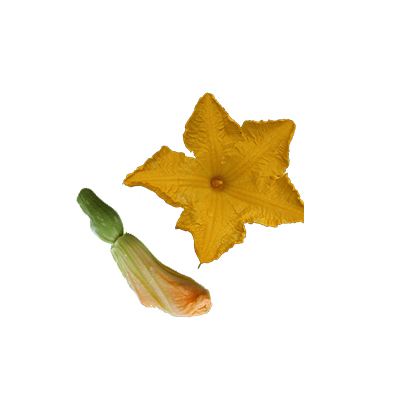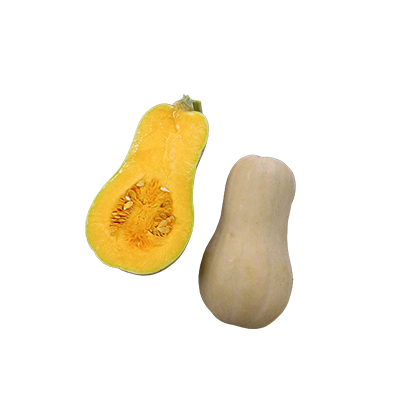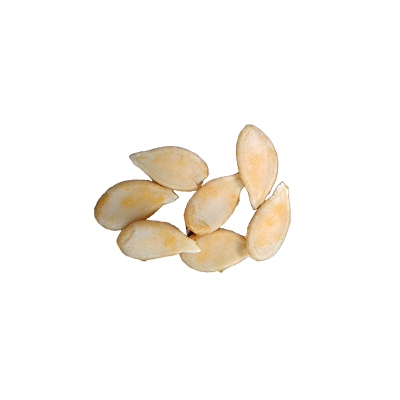Butternut Squash
Cucurbita moschata Duchesne
Cucurbitaceae
Location in our garden
Vegetable
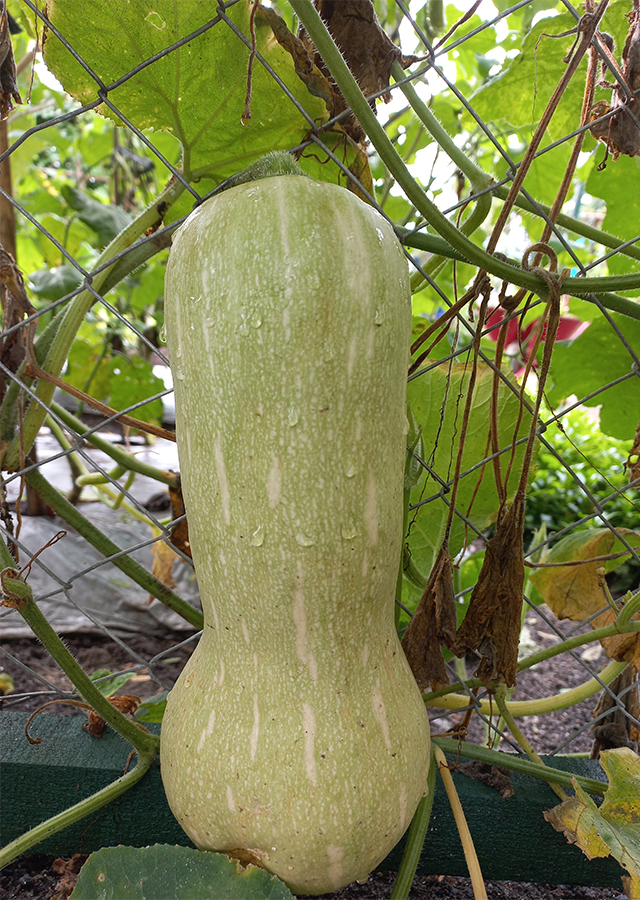
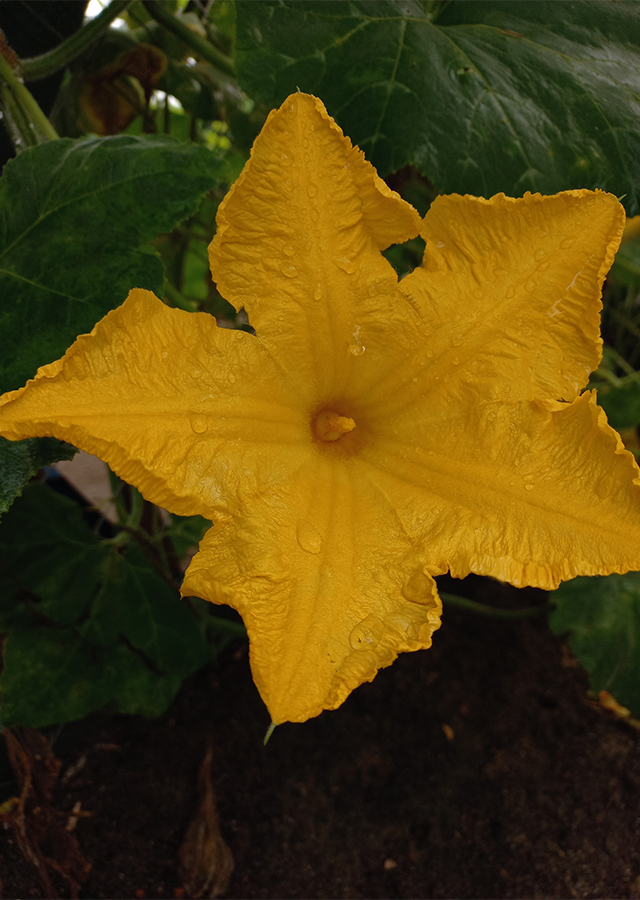

Synonym
Cucurbita colombiana (Zhit.) Bukasov
Cucurbita hippopera Ser.
Cucurbita macrocarpa Gasp.
Habitus
Herbaceous. An annual climbing plant that can produce stems up to 5 m long
Part Used
Leaves
Seeds
Flowers
Fruit
Roots
Growing Requirements
Full Sunshine
Habitat
Terrestrial
Overview
The genus Cucurbita originates from Central and South America. The plant is widely cultivated, especially in warm temperate and tropical areas, mainly for its edible fruit, though it is also an important leaf vegetable in Africa, supplies a popular edible seed and has a wide range of medicinal uses.
Vernacular Names
Courge musquée (French), Abóbora moscata (Poland), Mboga (Swedish).
Agroecology
It can be grown at elevations up to 2,400 metres in the tropics. It grows best in areas where annual daytime temperatures are within the range 20 - 30 °C, but can tolerate 10 - 40 °C. It prefers a mean annual rainfall in the range 600 - 1,600 mm, but tolerates 300 - 2,800 mm. Requires a rich, well-drained moisture retentive soil and a very warm, sunny and sheltered position. Prefers a pH in the range 5.5 to 7.5, tolerating 4.5 - 8.3. Moderate rainfall favours growth, but the roots of most cultivars are sensitive to high soil-water levels.
Morphology
- Stems - obtusely angular, long running, initially pubescent, often rooting at nodes.
- Leaves - alternate, simple, without stipules; petiole 9–24 cm long, grooved; blade broadly ovate in outline, shallowly palmately 5–7-lobed, (10–)20–35 cm in diameter, deeply cordate at base, margins toothed, softly hairy, sometimes with white markings disappearing at senescence, 3-veined from the base.
- Flowers - solitary, unisexual, regular, 5-merous, large, 10–20 cm in diameter, lemon yellow to deep orange; sepals free, subulate to linear, 1–3 cm long; corolla campanulate, with widely spreading lobes; male flowers long-pedicelled (up to 16 cm), with 3 stamens, filaments free, anthers usually connivent into a long twisted body; female flowers shortly pedicelled (up to 3.5 cm), with inferior, ellipsoid, 1-celled ovary, style thick, stigmas 3, 2-lobed.
- Fruits - large, cylindrical berry, flesh yellow to orange, many-seeded; fruit stalk enlarged at apex.
- Seeds - obovoid, flattened, 1–2 cm × 0.5–1 cm, usually white or tawny, sometimes dark-coloured, surface smooth to somewhat rough, margin prominent.
Cultivation
Propagated by seeds - can be sown in situ or in containers. Germination should take place within 2 weeks. When starting in containers, sow 2 or 3 seeds per pot and thin out to the best plant. Grow them on fast and plant out when they are about 10 cm tall.
Chemical Constituents
Flavonoids (catechin, hyperoside(quercetin-3-o-galactoside), rutin, luteolin-7-o-glucoside, quercetrin(quercetin-3-o-rhamonoside), naringin, apegenin-7-o-glucoside, quercetin, kaempherol, apegenin, luteolin, cirsiliol, cirsilineol, acacetinan), phenolic acid (quinic acid, protocatechuic acid, 4-O-caffeoylquinic acid, caffeic acid, syringic acid, p-coumaric acid, trans-ferulic acid, O-coumaric acid, 4, 5-di-O-caffeoyquinic acid, trans-cinnamic acid).
Traditional Medicinal Uses
- It is eaten fresh or roasted for the relief of abdominal cramps and distension due to intestinal worms.
- The oil from the seed is used as a vanishing cream for reddish blotches.
- The boiled root is galactagogue.
- The leaves are used to treat haemorrhages.
- An infusion of the flowers is used as a treatment for jaundice.
- The crushed fruit pulp is used as a cataplasm, placed on forehead to remedy headache, on the eyes to treat ophthalmia, and on all kinds of tumours.
Part Used
Reference Sources
- Fern, Ken. Useful Tropical Plants. (2021). Cucurbita moschata. http://tropical.theferns.info/viewtropical.php?id=Cucurbita+moschata. 04-12-21.
- Plant Resources of Tropical Africa. Cucurbita moschata. https://uses.plantnet-project.org/en/Cucurbita_moschata_(PROTA). 04-12-21.


